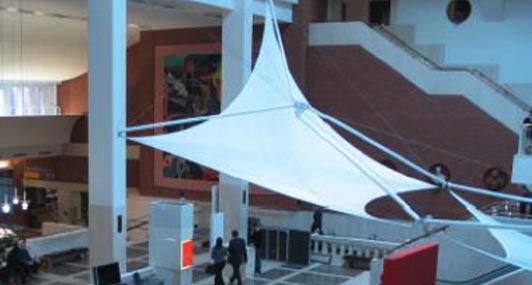“We have increased our scanning figures and can offer more items to be scanned as it [the X71] is so kind on fragile items”
The British Library
With approx. 200 million items the British Library holds the second largest collection in the world and is one of the most important research and universal libraries worldwide. Its extensive collection includes Da Vinci’s handwritten diaries and important original documents such as the Magna Carta.
Project background
To ensure the highest image quality in the course of their digital preservation program the studios in St Pancras and Boston Spa are equipped with state-of-the-art book scanning technologies and photographic imaging systems. In view of the increasing demand for photographic works the British Library was looking for a camera system with ability to capture rare, fragile and valuable items at highest quality in a more efficient way. The ambitious goal was to achieve the same productivity at their photographic services as with the book scanning equipment.
Book2Net Action
Testing the new X71 CMOS camera at the British Library in March 2016, the X71 camera exceeded all expectations in speed and image quality. Just a few weeks later MICROBOX installed the first X71 camera system in St. Pancras. Meanwhile the British Library is using three X71 cameras: Two in St. Pancras and a further system in the Boston Spa studio. Thanks to the latest high-resolution CMOS sensor in combination with the USB 3.0 interface the X71 is providing a capturing speed of only 0.7 seconds/image. Thus, the British Library is now able to achieve a significant higher productivity with their photographic works.
The X71
- • 71 megapixels
- • CMOS sensor technology
- • A0+ to macro items
- • Versatile and universally applicable with repro stand
- • Multispectral imaging
- • 3D digitization
- • Metamorfoze and FADGI
Results
Besides the benefit of an improved productivity the British Library was also able to increase the image quality significantly. Thus, the British Library is meeting the most demanding guide lines and standards such as Metamorfoze, FADGI and ISO 19262 to 19264.
The National Archives in numbers
- • 170 million objects
- • 25 million books
- • 1600 A.D. to now
- • 746km of shelving
- • 1,6 million visitors p.a.
- • 115 thousand regular readers
Book2Net ‘s intention is to develop practice-orientated book scanning solutions for the use in archives, libraries and museums by covering hardware, software and services. The book2net focuses on the requirements and needs of the end users of the digitization equipment. These needs are reviewed and incorporated into the development and ultimate design of our scanning solutions.

